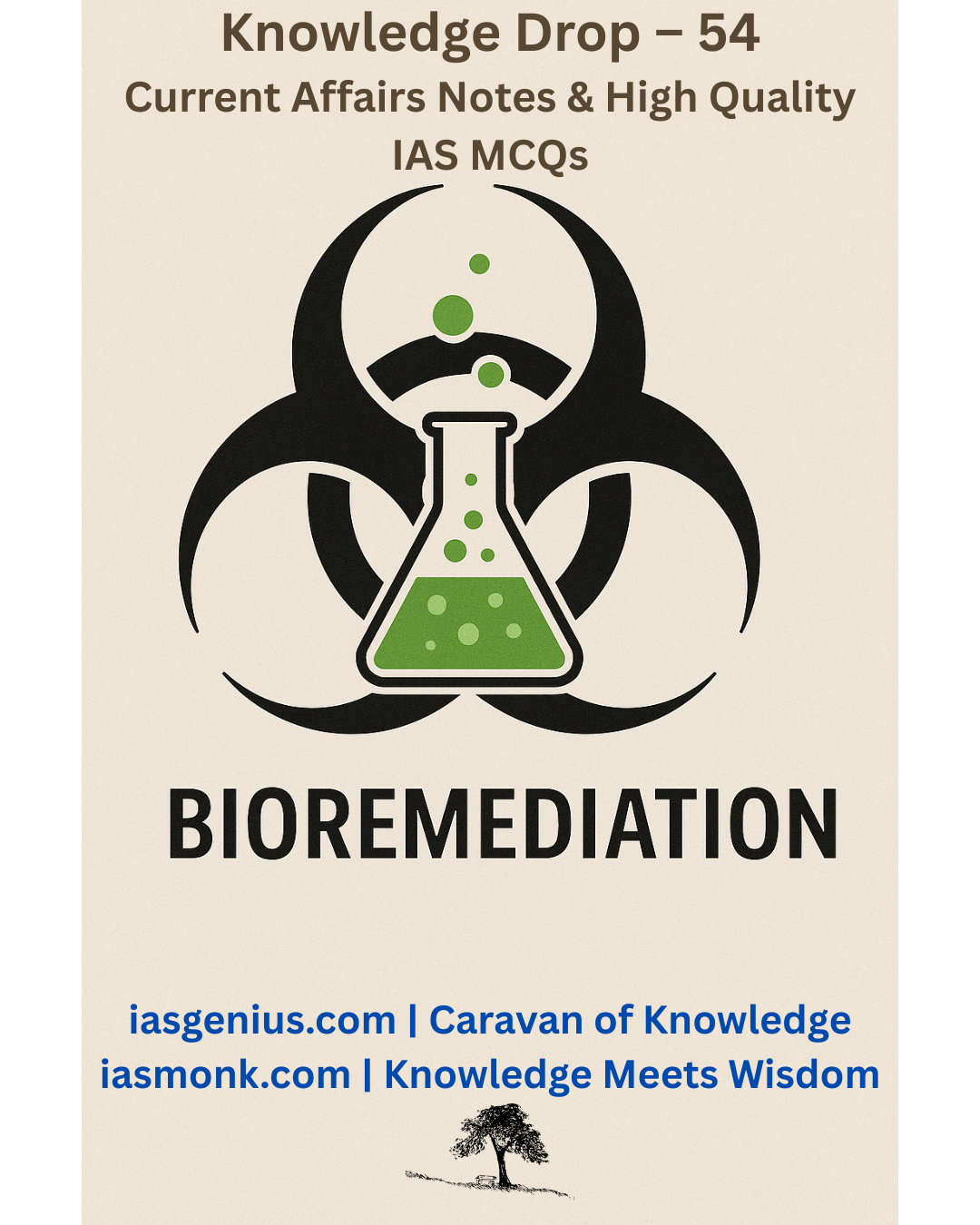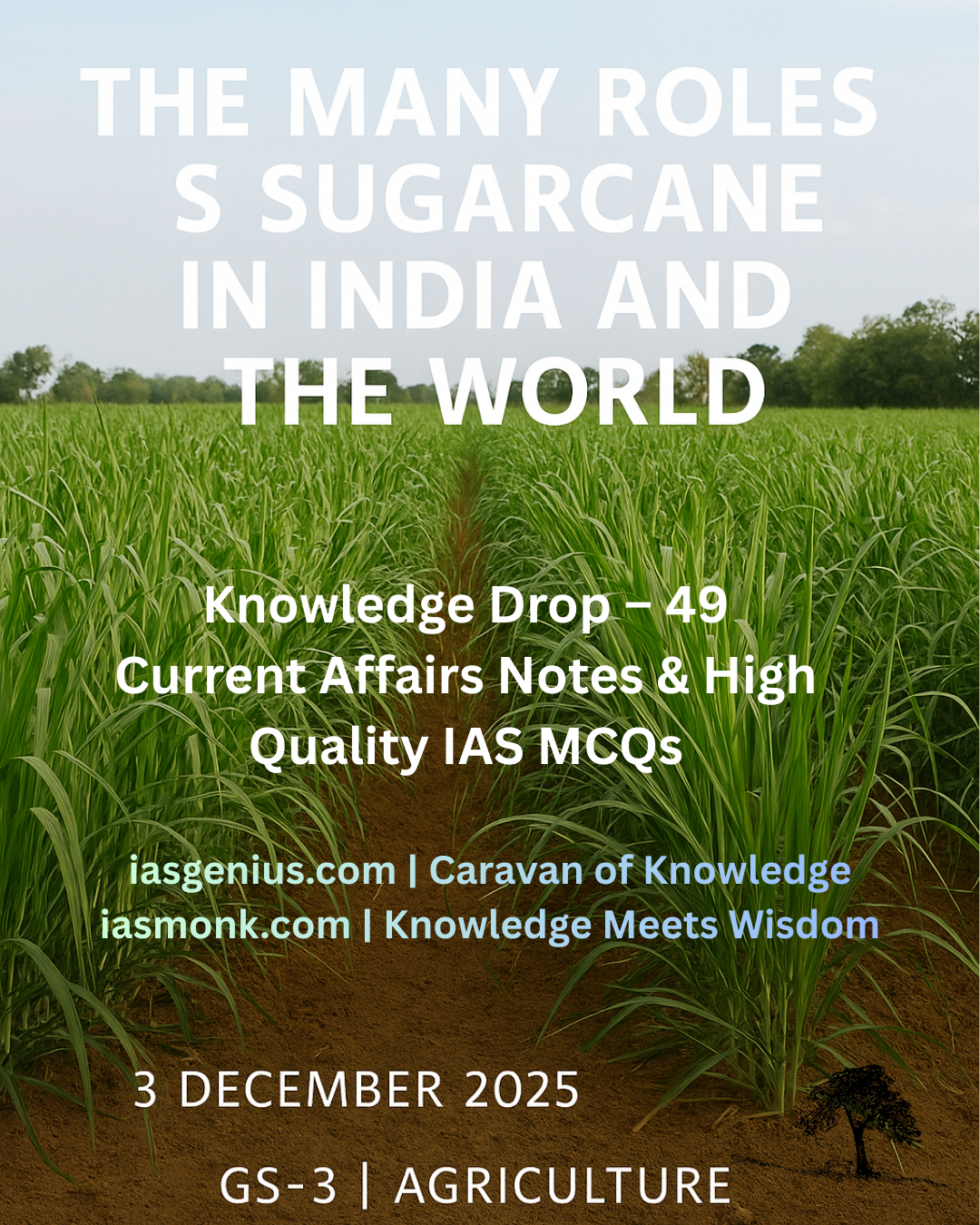
May 18, 2025, Post 4: 🧬Rewriting Life: Gene Editing Therapy Cures a Rare Disease in a Medical First | High Quality Mains Essay | Prelims MCQs
🧬 May 18, 2025
Rewriting Life: Gene Editing Therapy Cures a Rare Disease in a Medical First
SCIENCE & TECHNOLOGY

🎯 Thematic Focus:
Biotechnology | Gene Editing | Precision Medicine | Global Scientific Breakthroughs
🕊️ Opening Whisper
What if a disease was just a spelling mistake in our code — and we finally learned how to fix it?
🔍 Key Highlights:
- In a historic breakthrough, US scientists have successfully used CRISPR-based gene editing therapy to treat CPS1 deficiency — a rare genetic liver disorder — in an infant.
- The disease affects the urea cycle, where toxic ammonia builds up in the absence of the CPS1 enzyme, causing brain damage or death.
- This marks the first successful use of personalized CRISPR therapy to cure a life-threatening inherited metabolic disorder.
- A custom-made guide RNA + CRISPR-Cas9 enzyme complex was used to cut out and replace the faulty gene inside liver cells.
🧪 What is Gene Editing Therapy?
Definition:
Gene editing therapy refers to the intentional modification of DNA sequences within a person’s cells to treat or cure genetic diseases.
Mechanism (as shown in Tablet Image):
- A specially designed guide RNA finds the faulty gene.
- A DNA-cutting enzyme (e.g., Cas9) cuts the target site.
- The defective strand is replaced with a healthy copy.
🧰 Key Techniques
- CRISPR-Cas9: Most widely used; precise and programmable gene editing.
- Base Editing: Converts single DNA letters (e.g., A to G) without cutting both strands.
- Prime Editing: Edits by “search and replace” without double-strand breaks.
- Zinc Finger Nucleases (ZFNs): Older but more specific protein-based editors.
💡 Applications
- Medicine: Sickle Cell Anaemia, Beta-Thalassemia, cancer immunotherapy (CAR-T), rare genetic disorders.
- Agriculture: Disease-resistant crops (e.g., CRISPR rice, mustard).
- Veterinary: Enhanced livestock traits (muscle, fertility, resistance).
🇮🇳 India’s Progress
- CSIR–IGIB developing IndiCRISPR, an indigenous editing toolkit.
- DBT supporting genome research under the National Biopharma Mission.
- Gene Therapy Guidelines (2020) issued for clinical ethics and regulation.
⚠️ Challenges Ahead
- Safety: Risk of off-target mutations, immune reactions.
- Ethics: Germline editing (heritable changes), “designer babies”.
- Equity: High cost limits access; mostly available in developed nations.
📘 GS Paper Mapping
- GS-3: Biotechnology | Science and Technology – Developments and Applications
- GS-2: Health Policy | Ethics in Genetic Research
- Essay/Interview: Innovation vs Regulation | Future of Genetic Engineering
✨ A Thought Spark — by IAS Monk
Inside every illness lies a line of broken code — and now, humanity holds the cursor. We may not erase suffering, but we’ve begun to rewrite it.
High Quality Mains Essay For Practice :
Word Limit 1000-1200
Editing the Code of Life: CRISPR Therapy and the Future of Genetic Medicine
Introduction
In a landmark achievement for science and medicine, researchers in the United States have successfully used personalized CRISPR-based gene editing therapy to cure a rare and life-threatening disorder — Carbamoyl Phosphate Synthetase 1 (CPS1) deficiency — in an infant. This success story not only validates the potential of gene editing to transform modern healthcare but also opens new ethical and regulatory frontiers. As gene editing shifts from laboratory experiments to bedside cures, it signals a revolution that could alter how we perceive disease, heredity, and human potential.
What is Gene Editing Therapy?
Gene editing therapy refers to the intentional and precise modification of DNA sequences within human cells to correct genetic disorders. Unlike traditional gene therapy, which adds new genes to cells, gene editing aims to directly correct, replace, or remove faulty DNA at its source.
The most prominent tool is CRISPR-Cas9 — a molecular scalpel that uses a guide RNA to identify the defective sequence and a Cas9 enzyme to cut the DNA. The cell’s natural repair machinery is then used to insert a healthy version of the gene.
Other evolving methods include:
- Base Editing: Edits individual DNA bases without cutting the double helix.
- Prime Editing: Enables precise insertion, deletion, or replacement of DNA “letters” using a reverse transcriptase enzyme.
- Zinc Finger Nucleases (ZFNs) and TALENs: Older tools using engineered proteins to bind and modify DNA sequences.
The Breakthrough: Curing CPS1 Deficiency
CPS1 deficiency is a rare metabolic disorder where the liver lacks the enzyme required to convert toxic ammonia into urea, leading to rapid ammonia accumulation in the blood. Without intervention, this condition often results in seizures, brain damage, or death in infancy.
In this groundbreaking case, doctors extracted the infant’s liver cells and used a custom-designed CRISPR complex to correct the faulty gene. The cells were then reinfused into the liver, where they began functioning normally and detoxifying ammonia, restoring the child’s health.
This marks the first-ever successful in vivo therapeutic correction of a monogenic metabolic disease using gene editing — a milestone in regenerative medicine.
Applications of Gene Editing Therapy
1. Medicine
- Treating genetic blood disorders like Sickle Cell Anaemia and Beta-Thalassemia.
- Targeting cancers using CAR-T cell therapies, where T-cells are engineered to attack tumors.
- Curing rare diseases like Leber Congenital Amaurosis, Duchenne Muscular Dystrophy, and Huntington’s Disease.
2. Agriculture
- Developing pest-resistant, climate-resilient crops using gene-edited traits.
- Reducing dependence on chemical fertilizers and pesticides through precision farming.
3. Veterinary and Animal Science
- Enhancing disease resistance, muscle growth, and fertility traits in livestock.
India’s Progress in Gene Editing
India has taken notable steps toward embracing gene-editing science:
- CSIR–IGIB is developing an indigenous CRISPR toolkit called IndiCRISPR.
- The Department of Biotechnology (DBT) supports gene-editing innovation under the National Biopharma Mission.
- Gene Therapy Guidelines (2020) by ICMR and DBT provide a framework for ethical clinical trials and regulation of gene-editing technologies.
Ethical and Regulatory Concerns
As with all powerful technologies, gene editing raises serious ethical questions:
- Germline editing (modifying embryos or reproductive cells) can pass on changes to future generations — raising concerns about designer babies, inequality, and consent.
- Off-target effects may result in unintended mutations, potentially causing more harm than the disease.
- Access and equity remain challenges — advanced gene therapies are often priced in hundreds of thousands of dollars, making them unaffordable for most.
These risks necessitate robust regulation, global consensus, and transparent clinical evaluation.
Way Forward for India
India, with its vast genetic diversity and rising disease burden, can emerge as a global hub for ethical and affordable gene therapy if it:
- Builds affordable indigenous gene-editing platforms.
- Strengthens SPS-compliant and ethically monitored clinical trials.
- Invests in public-private partnerships and genomics education.
- Promotes open-access bioinformatics and biobank networks.
Conclusion
Gene editing is not just a medical milestone — it is a philosophical shift. It allows us to not only treat disease but edit its origin. Yet, with this power comes immense responsibility. As we move from healing symptoms to correcting the script of life itself, we must ensure that the narrative remains just, inclusive, and guided by human values.
This infant’s recovery is not just a medical success — it is a glimpse of a future where science writes hope into our DNA.
Target IAS-26: Daily MCQs :
📌 Prelims Practice MCQs
Topic:
MCQ 1 – Type 1: How many of the above statements are correct?
Consider the following statements regarding gene editing therapy:
1)Gene editing allows altering DNA sequences within an individual’s genome to treat genetic disorders.
2)CRISPR-Cas9 technology introduces foreign viral DNA into the human genome.
3)Prime Editing enables inserting, deleting, or replacing specific DNA sequences without breaking both strands.
4)Gene editing is currently being used for cancer treatment and agriculture.
How many of the above statements are correct?
A) Only two
B) Only three
C) All four
D) Only one
🌀 Didn’t get it? Click here (▸) for the Correct Answer & Explanation
✅ Correct Answer: B) Only three
🧠 Explanation:
Correct Answer: B) Only three
1)✅ True – It is the essence of gene editing therapy.
2)❌ False – CRISPR does not introduce viral DNA; it cuts at targeted genome locations.
3)✅ True – Prime editing is an advanced technique enabling precise edits.
4)✅ True – It’s used in cancer (e.g., CAR-T cells) and crop development.
MCQ 2 – Type 2: Two-statement evaluation
Consider the following statements:
1)CRISPR-based gene editing was recently used to cure CPS1 deficiency in a child.
2)In India, the IndiCRISPR platform is being developed by the Council of Scientific and Industrial Research (CSIR).
Which of the above statements is/are correct?
A) Only 1 is correct
B) Only 2 is correct
C) Both are correct
D) Neither is correct
🌀 Didn’t get it? Click here (▸) for the Correct Answer & Explanation
✅ Correct Answer: C) Both are correct
🧠 Explanation:
Correct Answer: C) Both are correct
1)✅ True – CPS1 deficiency was successfully treated using personalized CRISPR therapy.
2)✅ True – IndiCRISPR is being developed by CSIR–IGIB as an indigenous gene-editing tool.
MCQ 3 – Type 3: Coded correct options
Which of the following are applications of gene editing?
1)Treatment of genetic disorders like Sickle Cell Anemia
2)Creating flood-resistant crop varieties
3)Reducing soil erosion using microbial gene editing
4)Developing precision cancer therapies
Select the correct code:
A) 1, 2, and 4 only
B) 1, 2, and 3 only
C) 2, 3, and 4 only
D) 1 and 4 only
🌀 Didn’t get it? Click here (▸) for the Correct Answer & Explanation
✅ Correct Answer: A) 1, 2, and 4 only
🧠 Explanation:
Correct Answer: A) 1, 2, and 4 only
1)✅ Yes – It’s a key use case.
2)✅ Yes – Gene editing aids climate-resilient crops.
3)❌ No – Gene editing isn’t directly used for soil erosion management.
4)✅ Yes – CAR-T therapy is one example of gene-edited cancer treatment.
MCQ 4 – Type 4: Direct factual question
Which of the following institutions is responsible for formulating India’s Gene Therapy Guidelines (2020)?
A) Indian Council of Medical Research (ICMR) and Department of Biotechnology (DBT)
B) Council of Scientific and Industrial Research (CSIR)
C) National Centre for Genomic Research (NCGR)
D) Indian Institute of Science (IISc)
🌀 Didn’t get it? Click here (▸) for the Correct Answer & Explanation.
✅ Correct Answer: A) Indian Council of Medical Research (ICMR) and Department of Biotechnology (DBT)
🧠 Explanation:
Correct Answer: A) Indian Council of Medical Research (ICMR) and Department of Biotechnology (DBT)
Explanation: India’s Gene Therapy Guidelines (2020) were jointly issued by ICMR and DBT to regulate ethical and clinical use of genome-editing technologies..


















